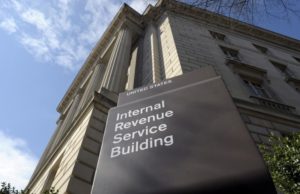Travel for Business? These Are the New Per-diem Rates

Travel for Business? These Are the New Per-diem Rates
If you travel a lot for business, listen up. The IRS has announced the new per-diem rates, which became effective on October 1. These numbers apply to any employee for all travel away from home that takes place on, or after that date. There are several changes to be aware of this year, especially because of the Tax Cut and Jobs Act. As part of the changes, new rates for the transportation industry were announced. The rate for incidental expenses was also altered. And last, but not least, the rates for high-cost locations were also released.
Daily Travel Expenses
Per diem (which means “for each day”) rates are used to make it much easier for employers to reimburse their employees who travel. They are set amounts that employers pay to their workers to reimburse their travel expenses, like food and lodging. That means the employee gets a fixed amount to spend on these things each day they are traveling, instead of being reimbursed the actual amount.
Keep Expense Reports
For tax purposes, per diem payments are not counted as part of the employee’s wages. Unless the payments are higher than the federal per diem rate or the employee doesn’t provide an expense report. Fail to get an expense report and you’re responsible to pay taxes on the payments. Furthermore, if you receive any payments that are higher than the per diem rate you will also be taxed on that amount.
Miscellaneous Deductions Have Changed
This is significant because the new tax law has changed how people can report their expenses compared to previous years. For example, last year, employees that incurred unreimbursed job expenses could deduct them as miscellaneous deductions, as long as they exceeded 2% of their adjusted gross income. But that has changed thanks to the Tax Cut and Jobs Act. The new law wiped out unreimbursed job expenses and miscellaneous itemized deductions, which fall into the 2% rule. That includes unreimbursed travel and mileage.
Self-Employed Can Still Claim Business Expenses
As for the self-employed, they can still deduct their business-related expenses. On the flip side, they cannot really take advantage of the per diem rates, as much as employed taxpayers. The self-employed can only use the per diem rates for eating expenses and not for travel. So, that means self-employed workers should continue to keep very detailed records of all their expenses.
What About Incidental Expenses?
So how does the changes affect incidental expenses, like room service, tips, laundry, and dry cleaning? They are still covered, but the per diem rate for these expenses only is $5. And some expenses that used to fall into the incidental expenses category no longer do. If you want to be reimbursed for those expenses then you’ll have to check with your employer. In fact, that’s a smart move in general. Many of the unreimbursed job expenses that you used to have will no longer be deductible under the Tax Cut and Jobs Act. So, it’s a good idea to see if your employer can reimburse you for those expenses going forward.
We hope you found this article about “Travel for Business? These Are the New Per-diem Rates” helpful. If you have questions or need expert tax or family office advice that’s refreshingly objective (we never sell investments), please contact us or visit our Family office page or our website at www.GROCO.com. Unfortunately, we no longer give advice to other tax professionals gratis.
To receive our free newsletter, contact us here.
Subscribe to our YouTube Channel for more updates.

Alan Olsen, is the Host of the American Dreams Show and the Managing Partner of GROCO.com. GROCO is a premier family office and tax advisory firm located in the San Francisco Bay area serving clients all over the world.
Alan L. Olsen, CPA, Wikipedia Bio

GROCO.com is a proud sponsor of The American Dreams Show.

The American Dreams show was the brainchild of Alan Olsen, CPA, MBA. It was originally created to fill a specific need; often inexperienced entrepreneurs lacked basic information about raising capital and how to successfully start a business.
Alan sincerely wanted to respond to the many requests from aspiring entrepreneurs asking for the information and introductions they needed. But he had to find a way to help in which his venture capital clients and friends would not mind.
The American Dreams show became the solution, first as a radio show and now with YouTube videos as well. Always respectful of interview guest’s time, he’s able to give access to individuals information and inspiration previously inaccessible to the first-time entrepreneurs who need it most.
They can listen to venture capitalists and successful business people explain first-hand, how they got to where they are, how to start a company, how to overcome challenges, how they see the future evolving, opportunities, work-life balance and so much more..
American Dreams discusses many topics from some of the world’s most successful individuals about their secrets to life’s success. Topics from guest have included:
Creating purpose in life / Building a foundation for their life / Solving problems / Finding fulfillment through philanthropy and service / Becoming self-reliant / Enhancing effective leadership / Balancing family and work…

MyPaths.com (Also sponsored by GROCO) provides free access to content and world-class entrepreneurs, influencers and thought leaders’ personal success stories. To help you find your path in life to true, sustainable success & happiness. It’s mission statement:
In an increasingly complex and difficult world, we hope to help you find your personal path in life and build a strong foundation by learning how others found success and happiness. True and sustainable success and happiness are different for each one of us but possible, often despite significant challenges.
Our mission at MyPaths.com is to provide resources and firsthand accounts of how others found their paths in life, so you can do the same.
Profit From Foreclosures by Preventing Them
Profit From Foreclosures by Preventing Them What makes foreclosures so appealing to many real estate investors is that it’s not one-size-fits-all strategy. You have three basic choices when it comes to c investing: pre-foreclosure, at the auction, and after the auction. Let’s take a look at what’s involved in preforeclosure investing. Preforeclosure refers to the period…
Seven Tax Facts About Selling Your Home
Seven Tax Facts About Selling Your Home During summer months, some people sell their home. Many of those individuals will make a profit on the sale and still will not have to pay a single dime of additional income tax to the IRS. Here are seven tax facts about selling your home. Ownership and Use…
When Not to Name Your Spouse the Beneficiary of Your IRA
When Not to Name Your Spouse the Beneficiary of Your IRA By Robert Cavanaugh In most cases, naming your spouse as the beneficiary of your IRA makes the most sense. However, depending on your wishes, other beneficiary arrangements may do a better job of accomplishing your goals. First, let’s take a quick look at the…
IRS Guidance for SEC Disclosure of Listed Transaction Penalties
IRS Guidance for SEC Disclosure of Listed Transaction Penalties On August 15, 2005, the IRS issued guidance to taxpayers who are required to disclose listed transaction penalties to the SEC. Rev. Proc. 2005-51 sets forth the form, content, and timing of SEC disclosures for certain reportable transaction penalties that taxpayers are required to make pursuant…


